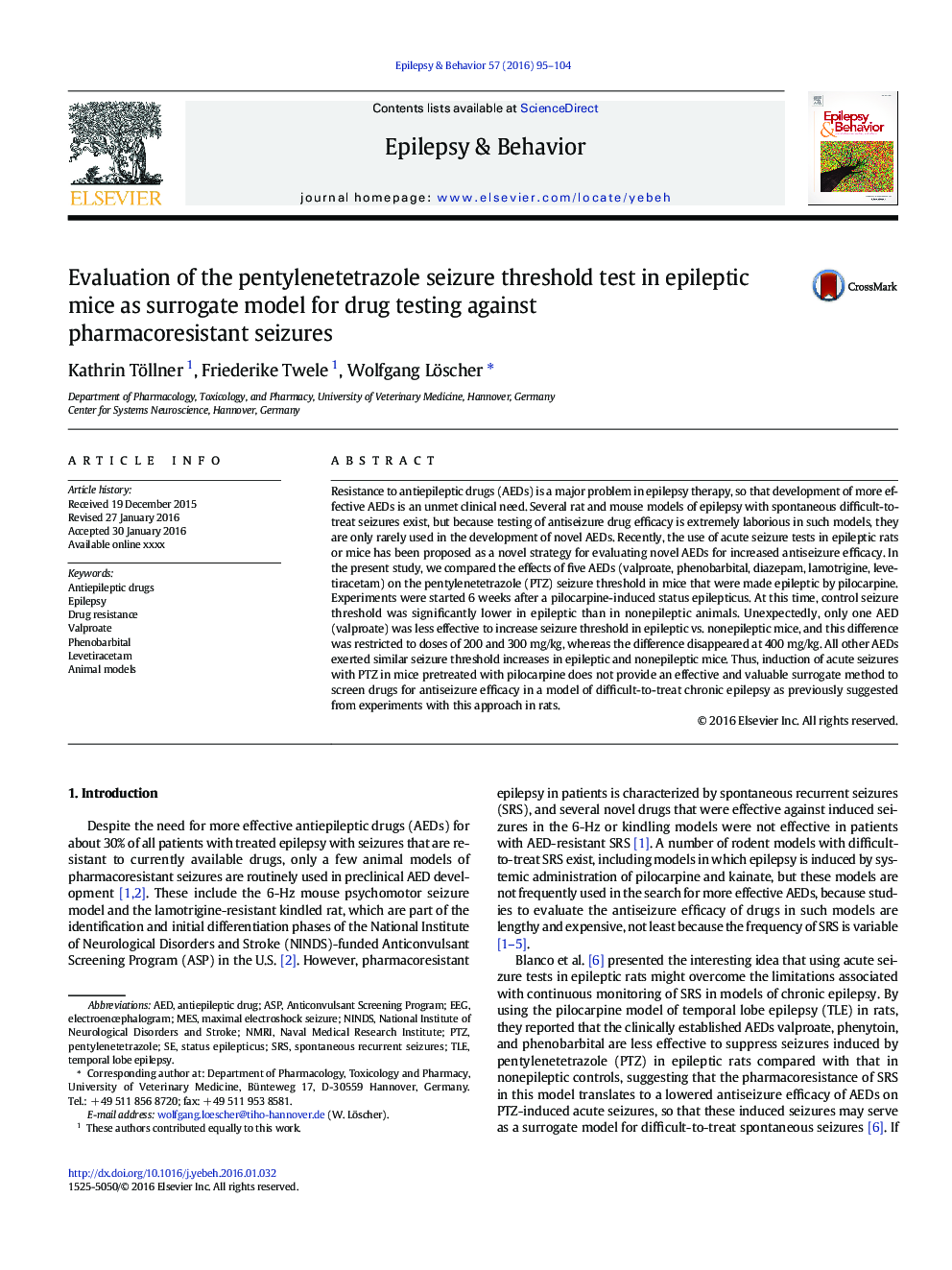| Article ID | Journal | Published Year | Pages | File Type |
|---|---|---|---|---|
| 6010209 | Epilepsy & Behavior | 2016 | 10 Pages |
Abstract
Resistance to antiepileptic drugs (AEDs) is a major problem in epilepsy therapy, so that development of more effective AEDs is an unmet clinical need. Several rat and mouse models of epilepsy with spontaneous difficult-to-treat seizures exist, but because testing of antiseizure drug efficacy is extremely laborious in such models, they are only rarely used in the development of novel AEDs. Recently, the use of acute seizure tests in epileptic rats or mice has been proposed as a novel strategy for evaluating novel AEDs for increased antiseizure efficacy. In the present study, we compared the effects of five AEDs (valproate, phenobarbital, diazepam, lamotrigine, levetiracetam) on the pentylenetetrazole (PTZ) seizure threshold in mice that were made epileptic by pilocarpine. Experiments were started 6Â weeks after a pilocarpine-induced status epilepticus. At this time, control seizure threshold was significantly lower in epileptic than in nonepileptic animals. Unexpectedly, only one AED (valproate) was less effective to increase seizure threshold in epileptic vs. nonepileptic mice, and this difference was restricted to doses of 200 and 300Â mg/kg, whereas the difference disappeared at 400Â mg/kg. All other AEDs exerted similar seizure threshold increases in epileptic and nonepileptic mice. Thus, induction of acute seizures with PTZ in mice pretreated with pilocarpine does not provide an effective and valuable surrogate method to screen drugs for antiseizure efficacy in a model of difficult-to-treat chronic epilepsy as previously suggested from experiments with this approach in rats.
Keywords
AEDAnticonvulsant Screening ProgramNMRITLESRSASPPTZElectroencephalogramstatus epilepticusEpilepsyMaximal electroshock seizurespontaneous recurrent seizuresantiepileptic drugantiepileptic drugsValproateNINDStemporal lobe epilepsyPhenobarbitallevetiracetamAnimal modelsMeSDrug resistancenaval medical research instituteNational Institute of Neurological Disorders and StrokeEEGPentylenetetrazole
Related Topics
Life Sciences
Neuroscience
Behavioral Neuroscience
Authors
Kathrin Töllner, Friederike Twele, Wolfgang Löscher,
